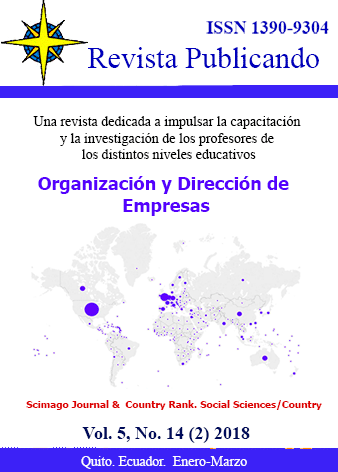Resumen
Climate change refers to any apparent change in the patterns expected of the climate, which occurs in the long term in a particular region or for the entire global climate. These changes are due to unusual occurrences in the Earth's climate. Iran, like many countries, is exposed to climate phenomena, which in turn will exacerbate the crisis of water and drought. In this study, we will analyze this issue against the phenomenon of climate change in order to estimate the vulnerability of Iran, and to this end, we will use the CVI vulnerability index on the provincial scale. By utilizing the results of this research, it will be clear those suitable solutions to increase adaptation to climate change conditions. The results of this research indicate that Hamadan and Alborz provinces have the highest vulnerability and therefore have the least adaptability to climate change compared to other provinces. On the other hand, Khuzestan and Tehran provinces have the lowest degree of relative vulnerability due to rich water resources, literacy rate and industry's GDP. Given the many differences in vulnerability, decision-makers can develop provincial-level policies to control more vulnerability.
Referencias
Adger, W. N., N. Brooks , G. Bentham, M. Agnew and S. Eriksen (2004). “New indicators of vulnerability and adaptive capacity.” Norwich, UK:Tyndall Centre for Climate Change Research.
Burd-Sharps, S., Lewis, L. and Martins, E. B. (2008). “The Measure of America: American Human Development Report.” New York:Columbia University Press.
Department of Energy (2006), the updated water comprehensive plan, Great Karun Economic
Studies (Volume 14).
Downing, T. E., Butterfield, R., Cohen, S., Huq, S., Moss, R., Rahman, A., Sokona, Y. and L. Stephen. (2001). Vulnerability indices: Climate change impacts and adaptation. United Nations Environment Programme, Policy Series 3. New York: United Nations.
Eriksen, S. H. and Kelly, P. M. (2007). "Developing credible vulnerability indicators for climate adaptation policy assessment." MitigationAdaptation Strategies for Global Change, 12(4),495-524.
Esty, D. C., Levy, M., Srebotnjak, T., and de Sherbinin, A. (2005). “Environmental Sustainability Index: Benchmarking National Environmental Stewardship.” New Haven, CT: Yale Center for Environmental Law & Policy.
FYDP (Five-Year Development Plan) (2010) President Deputy For Strategic Planning And Control (2011-2015).
FYDP (Forth-Year Development Plan) (2003) Management and Planning Organization (2004-2009).
Gí¼rsoy, S. and Jacques, P. (2014). “Water security in the Middle East and North African region.” Journal of Environmental Studies and Sciences, 4(4), 310-314.
Hahn, M. B., Riederer, A. M. and Foster, S. O. (2009). "The Livelihood Vulnerability Index: A pragmatic approach to assessing risks from climate variability and change””A case study in Mozambique." Global Environmental Change, 19(1), 74-88.
IPCC (Intergovernmental Panel On Climate Change) (2013) Fifth Assessment Report: Climate Change, Working Group II: Impacts, Adaptation and Vulnerability.
IPCC. (2007). Appendix I: Glossary. In: Climate Change 2007: Impacts, Adaptation and Vulnerability. Contribution of Working Group II to the Fourth Assessment Report of the Intergovernmental Panel on Climate Change [Parry, M.L., O.F. Canziani, J.P. Palutikof, P.J. van der Linden, and C.E. Hanson (eds.)]. Cambridge University Press, Cambridge, UK, and New York, NY, pp. 869-883.
Iran National Communication To United Nations Framework Convection on Climate Change (UNFCCC). (2003). 96-101.
Iran second national communication to UNFCCC. (2010). Iran second national communication to UNFCCC, Department of Environment and United Nation Development Program.
IWPCO (Iran Water and power Resource Development Company) (2011) Iran Water Resources Balance Data.
Jafari, M. (2007). “Review on needfulness for plant eco physiological study and investigation on climate change”™s effects on forest, rangeland and desert ecosystems.” presented in Workshop: Climate Change in South-Eastern European Countries: Causes, Impacts, Solutions, Orangerie, Burggarten, Graz, Austria.
Jafari, M. (2008). “Investigation and analysis of climate change factors in Caspian Zone forests for last fifty years.” Iranian Journal of Forest and Poplar Research, 16(2), 314-326 pp.
Madani, K. (2014). “Water management in Iran: what is causing the looming crisis?” Journal of Environmental Studies and Sciences, 4(4), 315-328.
Usted es libre de:
Compartir — copiar y redistribuir el material en cualquier medio o formato
Adaptar — remezclar, transformar y construir a partir del material
La licenciante no puede revocar estas libertades en tanto usted siga los términos de la licencia
Bajo los siguientes términos:
Atribución — Usted debe dar crédito de manera adecuada, brindar un enlace a la licencia, e indicar si se han realizado cambios. Puede hacerlo en cualquier forma razonable, pero no de forma tal que sugiera que usted o su uso tienen el apoyo de la licenciante.
NoComercial — Usted no puede hacer uso del material con propósitos comerciales.
CompartirIgual — Si remezcla, transforma o crea a partir del material, debe distribuir su contribución bajo la lamisma licencia del original.
